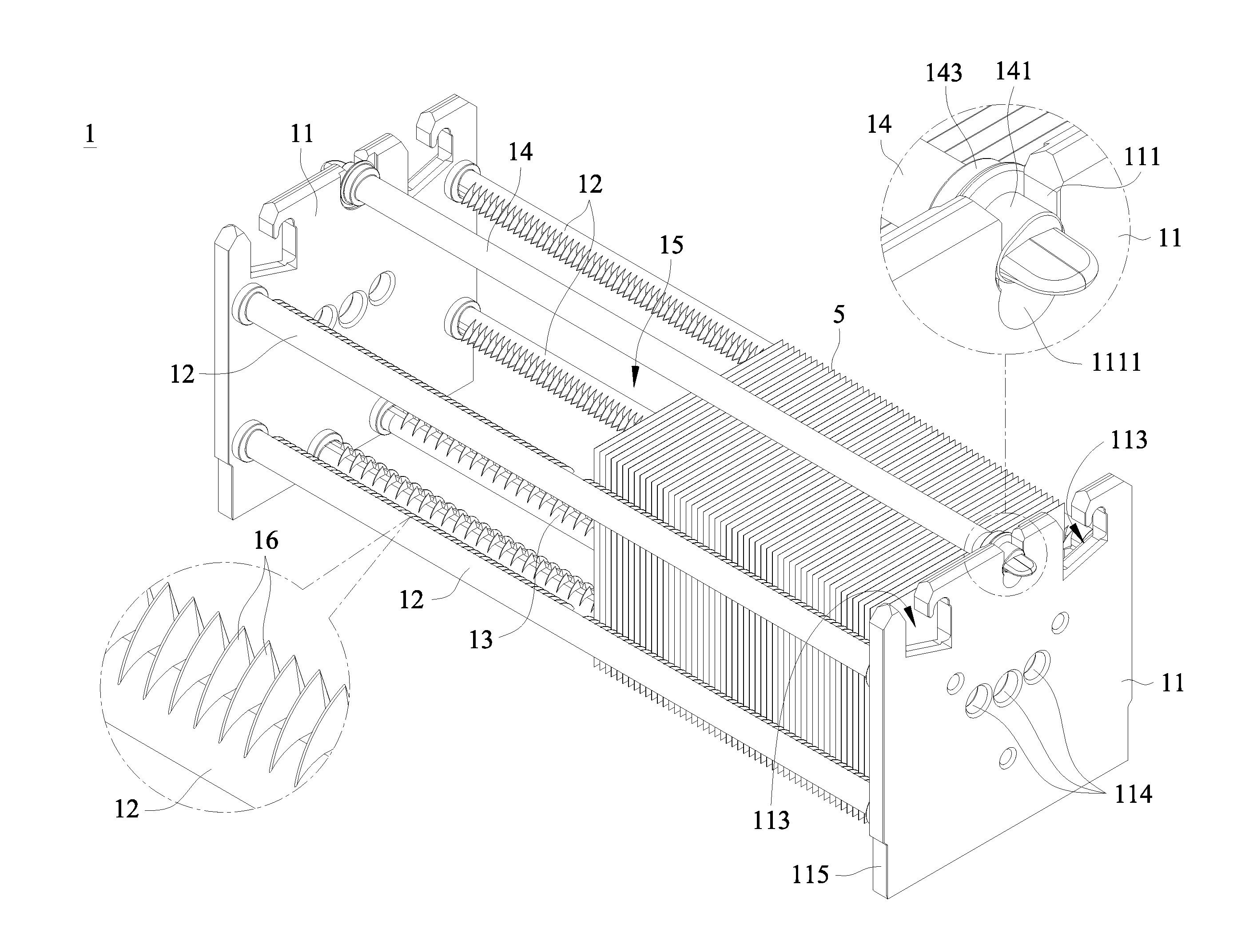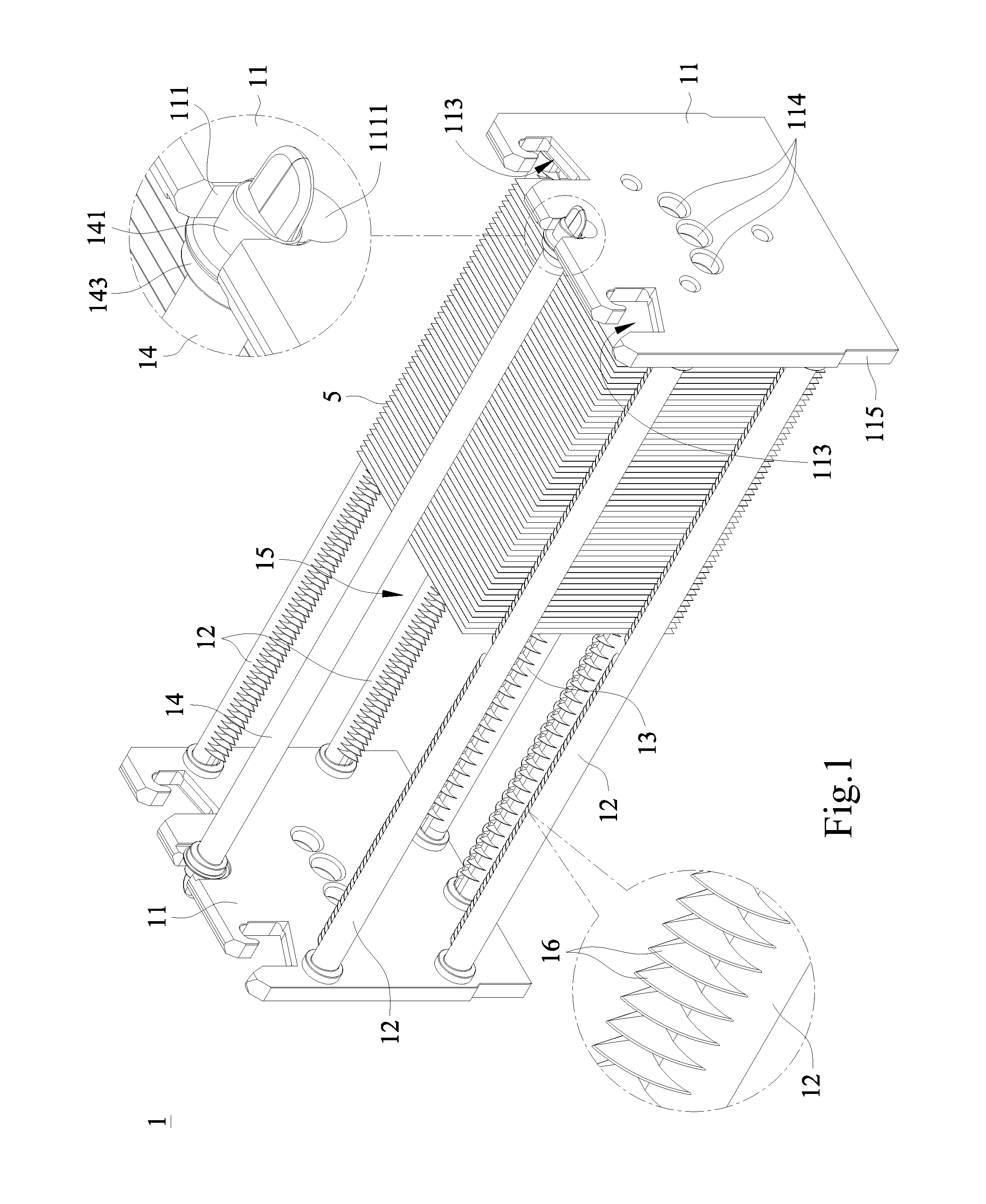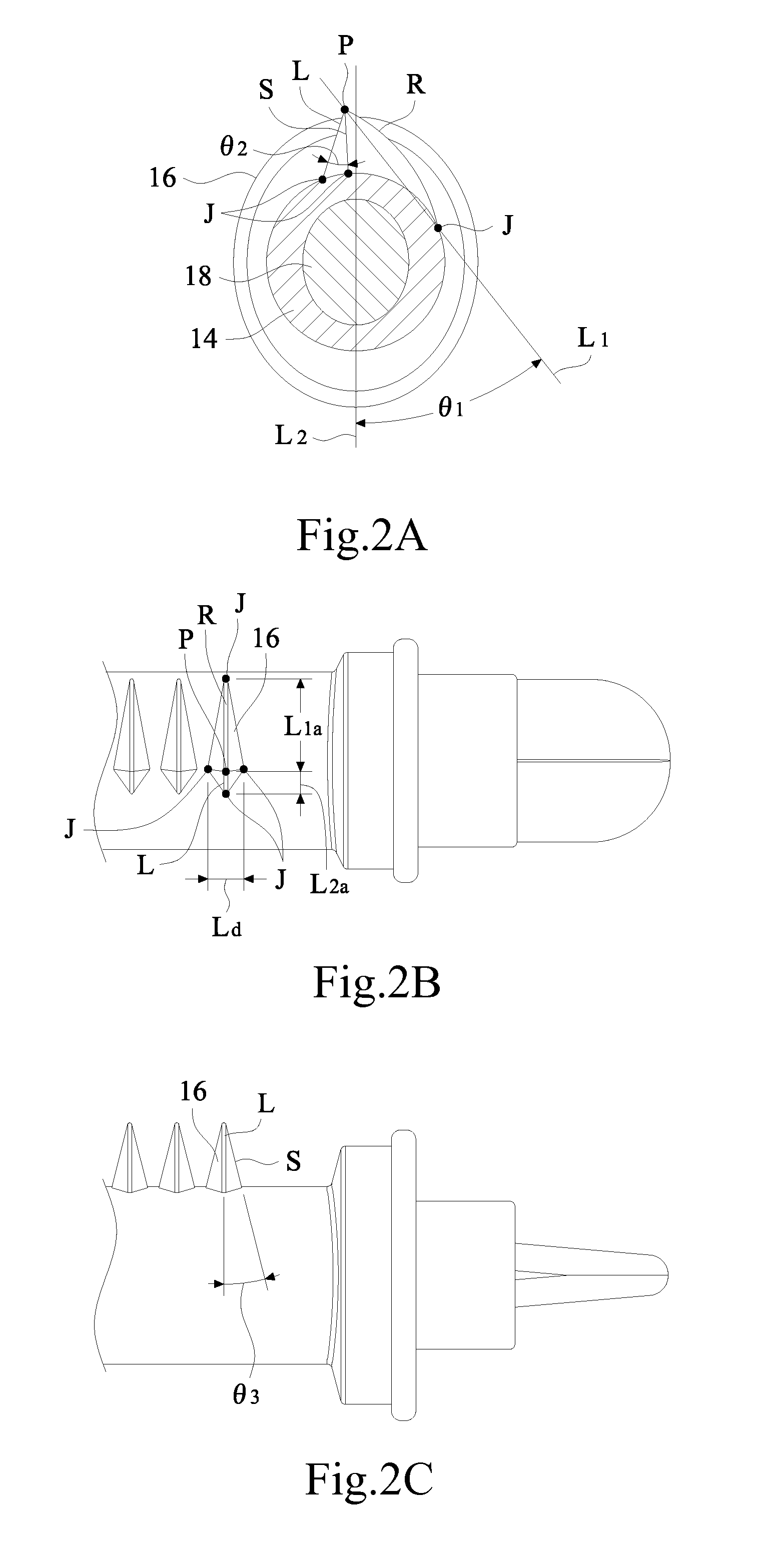Substrate Carrier For Solar Cells
a solar cell and substrate technology, applied in the field of substrate carriers, can solve the problems of reducing material and the structure of conventional carriers are not strong enough to stand up to the test, and the yield of solar cells is reduced, so as to achieve the effect of superior hydrophobicity, high temperature and high cleanness
- Summary
- Abstract
- Description
- Claims
- Application Information
AI Technical Summary
Benefits of technology
Problems solved by technology
Method used
Image
Examples
first embodiment
[0036]Refer to FIGS. 2A-2B for a side and a top views of first teeth according to the present invention. As shown in FIG. 2A, each of the first teeth 16, based on its side (axial) view, is formed by a longer arc edge R, a shorter line edge L, a pair of symmetric slant sides S, and an apex P. The apex P is defined as the highest point of the first teeth 16 (namely, located at the upper or far most part of the rod). As shown in FIG. 2B, each of the first teeth 16, based on its top (lengthwise) view, is connected to the side rod 12 and the press rod 14 respectively at the four junctions J, such that each of the first teeth 16 is able to support the respective solar cell substrate 5 through the pair of slant sides S (both Js located at the right and left positions of P) in a point-to-point contact manner.
[0037]Moreover, in the first embodiment, in the side view of the first teeth 16 is shown as an asymmetry fin. The radius of curvature of the arc edge R is between 3 mm and 500 mm. An an...
second embodiment
[0046]In the present invention, as shown in FIG. 4A, as viewed from the side, the first teeth 16 is in a form of an isosceles trapezoid, and is formed by a top face Ut, a pair of chamfer faces Ct, a pair of slant faces St, and a bottom portion. The chamfer face Ct has a radius of curvature between 1 mm and 30 mm. An angle θ5 is formed between a slant face St and a line Lt1 passing the center of the top face Ut and the center of the rod, and the angle θ5 has a range of 1°˜60°. Through the design of the size and angle of the structure mentioned above, the carrier is able to have optimal hydrophobicity, so that the solar cells thus produced could achieve the highest photo-electric conversion efficiency.
[0047]In the present embodiment, as shown in FIG. 4B, the first teeth 16 is shown in its front view as provided with the top face Ut, the chamfer face Ct, the slant face St, and the two slant side faces Bt. An angle θ6 is formed between the slant side face Bt and a line Lt2 passing the c...
third embodiment
[0048]Then, refer to FIG. 5A for a side view of a first teeth according to the present invention. As shown in FIG. 5A, the first teeth 16 are shown in its side view as an isosceles triangle having an apex P. The isosceles triangle is provided with two identical slant sides Si. An angle θ7 is formed by one of the slant sides, and a line L extending from the apex P to the center O of the rod (namely, the side rod 12, the bottom rod 13, or the press rod 14), and the angle θ7 has a range of 3°˜60°. Through the design of the size and angle of the structure mentioned above, the carrier is able to have optimal hydrophobicity, so that the solar cells thus produced could achieve the highest photo-electric conversion efficiency.
[0049]Refer to FIG. 5B for a top view of the first teeth according to the third embodiment of the present invention. As shown in FIG. 5B, the first teeth 16 are shown in its top view as a rhomb. The rhomb is shown with a maximum angle radial side F (radial side F facin...
PUM
 Login to View More
Login to View More Abstract
Description
Claims
Application Information
 Login to View More
Login to View More - R&D
- Intellectual Property
- Life Sciences
- Materials
- Tech Scout
- Unparalleled Data Quality
- Higher Quality Content
- 60% Fewer Hallucinations
Browse by: Latest US Patents, China's latest patents, Technical Efficacy Thesaurus, Application Domain, Technology Topic, Popular Technical Reports.
© 2025 PatSnap. All rights reserved.Legal|Privacy policy|Modern Slavery Act Transparency Statement|Sitemap|About US| Contact US: help@patsnap.com



